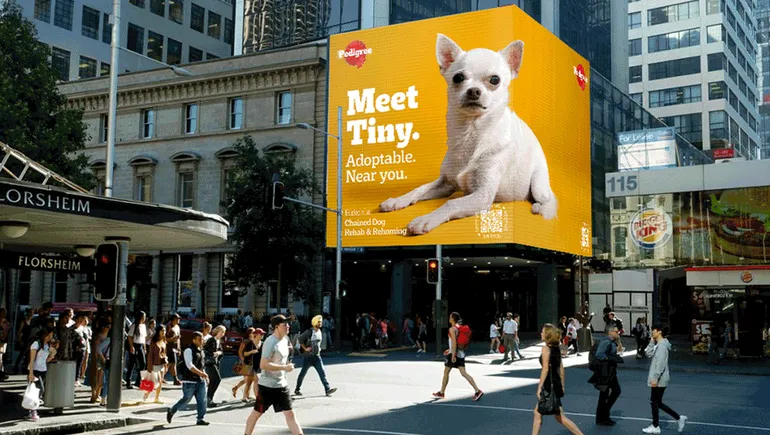
P&G’s Pritchard calls for digital media’s reinvention as ‘dark side’ worsens
Dive Brief:
- Procter & Gamble’s Chief Brand Officer Marc Pritchard issued a call to entirely reinvent the digital media supply chain as clean-up efforts of the current ecosystem prove futile in the face of rapid growth, according to news shared with Marketing Dive. The plan for a new media supply chain was announced today (April 11) at the ANA’s annual Media Conference in Orlando, Florida.
- The plan will be centered on five core principles for marketers to follow: elevating quality, including by improving diverse portrayals of consumers across race, gender, age lines and more; promoting civility, with marketers and their partners working to create a constructive, balanced online discourse; leveling the playing field, including by introducing a single tag that controls for ad frequency and duplication and can be applied to ads across digital and TV; simplifying privacy, namely through a call for a comprehensive U.S. federal privacy law; and taking back control, specifically around areas like first-party data, in-house analytics teams and reinventing agency partnerships.
- Pritchard’s call to action was heartily endorsed by the ANA, a trade organization of marketers of which he is a chairman. Bob Liodice, the group’s president, outlined steps the ANA is taking to support the plan, such as increasing governance of measurement and data transparency standards; ramping up actions to eliminate fraud and improve brand safety online; and more publicly recognizing industry standards around gender equality, inclusion and sustainability.
Dive Insight:
Pritchard, a marketing thought leader and head of brand duties at one of the largest advertisers in the world, has issued a remarkably lofty initiative in pushing the industry to create an entirely new media supply chain to operate in. The executive has pursued similarly broad calls to action before, including in 2017, when he gave a pivotal speech about the need for cleaning up the murk of digital media, including by pressuring the major platforms, like Facebook, to adopt MRC-accredited, third-party ad verification.
But the outline behind his latest project is arguably far more dramatic and in some ways recognizes that recent efforts to improve transparency have not properly considered the scale of the problem, even if they have produced some progress. Facebook, for example, eventually submitted to an MRC audit. Previous efforts might have acted as band-aid fixes to addressing more systematic issues — ones that are only being compounded by the rapid pace of growth of digital media, according to the executive.
“Digital media continues to grow exponentially, and with it, a dark side persists, and in some cases, has gotten worse,” Pritchard said during his talk in Orlando, excerpts of which were shared by the ANA in an email to Marketing Dive.
“Waste continues to exist from lack of transparency and fraud,” he continued. “Seven out of 10 consumers say ads are annoying, and ad blocking is accelerating. Privacy breaches and consumer data misuse keeps occurring. Unacceptable content continues to be available and is still being viewed alongside our brands.”
While Google and Facebook, the two largest digital advertising platforms in the world and frequent culprits in causing digital media transparency woes, have tried to solve some of the challenges Pritchard has outlined over the past several years, controversies continue to dog both companies and degrade consumer trust. Google’s YouTube, for example, has faced harsh criticism in recent months for everything from having pedophilia-linked content to reportedly ignoring its algorithm’s bent toward promoting more extreme, toxic videos in the pursuit of growth. Facebook, rattled by scandals like Cambridge Analytica, is trying to solve its own transparency problems by pivoting its entire business model to focus on private, encrypted messaging.
Flying largely under the public scrutiny radar amid these changes are marketers, who’ve done little to curb their reliance on Google and Facebook and have continued to help drive the platforms to record revenue heights. Failure to hold the platforms more accountable is potentially part of the reasoning behind trying to build a new digital media supply chain from whole cloth rather than tweaking the current one. Unilever, P&G’s chief competitor in the packaged goods category, is enacting a similar change to how it conducts its digital media buying through the implementation of a wide-ranging Trusted Publishers network that is based on stringent standards for the publishers and platforms to follow around ad fraud, ad formatting, brand safety, traffic quality, data access and more.
Specific parameters for Pritchard’s plan also indicate that P&G and its peers are accelerating strategies to better steel themselves for upcoming data privacy laws in the U.S., like California’s CCPA, which are expected to create a compliance headache for marketers, especially if more individual states adopt bills with varying guidelines. The demand for a single federal privacy law has been spearheaded by the major advertising trade bodies, with the ANA, 4A’s, IAB and others joining together earlier this week to form the Privacy For America group with which P&G is now partnering.
Another piece of the new media supply chain principles that addresses the privacy problem is the focus on wresting greater control over first-party data. During a panel at CES in January, Pritchard nodded to first-party data informing more of P&G’s functions as a means of course-correcting after the CPG giant previously ceded too much power to algorithms. Pritchard at the show said that P&G was investing more in internal data specialists and technology, which has, in turn, affected how the Cincinnati-based company looks at everything from product design to its agency roster. The executive is clearly angling to make that approach more of an industry standard as he sounds the call for marketers to rely less on traditional advertising as a driver of growth.





